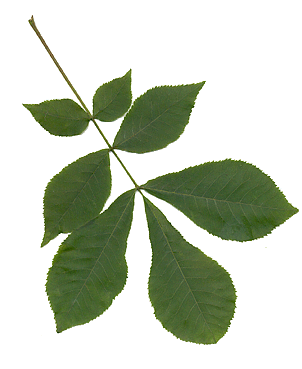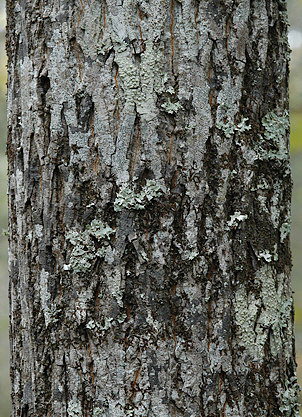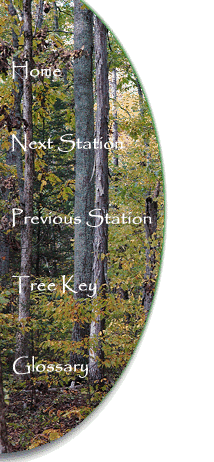| |
|
| |
 |
| |
Bitternut Hickory Leaf |
Identification:
Look beneath the station tree for the fallen leaves. The leaves are
6 inches to 10 inches in
length, and are alternate,
pinnately
compound, shiny above and paler
and lightly hairy below. Each leaf has 7 to 11 sessile
leaflets. The
margins of the leaflets are
serrate. The
rachis is slender and slightly hairy.
Compare these leaves to those of the Shagbark Hickory, and to those
of the White and Blue Ashes. Note the
alternate pattern of the
leaves and branches, which distinguishes this tree from the ashes,
which are opposite.
| |
|
 |
|
|
Bitternut Hickory Bark |
The bark of the Bitternut Hickory is
a slate gray. In older trees the bark becomes shallowly
fissured with interlacing ridges.
| |
|
| |
 |
| |
Bitternut Hickory Twig and Buds |
The twigs of the Bitternut Hickory
are gray-brown, lenticellate and stout. The
terminal
bud is 1/2 inch long with a distinctive sulphur-yellow color.
Bud scales are
valvate.
Lateral buds are 1/4 inch long and are
also sulphur-yellow.
Other Uses
and Lore:
The wood of the bitternut hickory has been used for
tool handles and agricultural implements. It is also used in the
curing process for curing hams and bacon. Early settlers
pressed an oil from the nut, which some used as a remedy for
rheumatism, while others used it to fuel crude lamps.
The nuts are eaten by a wide variety of wildlife,
including wild turkey, squirrels, small rodents, raccoon, and
white-tailed deer.
The
Trail From Station Ten to Station Eleven
 |
| Young Great
Horned Owl |
At Station Ten
the trail flattens out as it traverses a bottomland area. This
is a good area to look for owls. Great Horned Owls can be on
the nest in January and feeding young in early March. Listen
as you go through these areas for the scratchy notes of young owls
doing "begging" calls. They will do these calls right on
through the spring and summer months into the fall. Station
Eleven will be on the left side of the trail.
|

